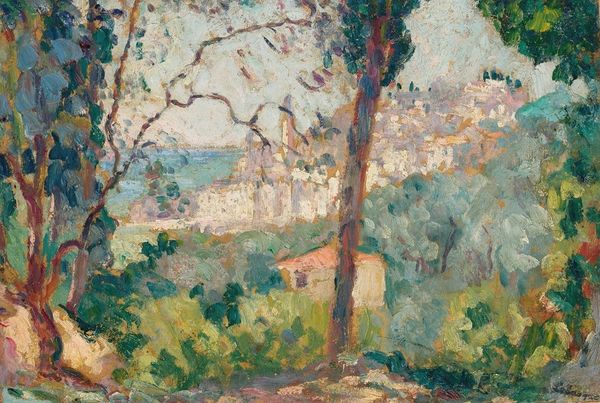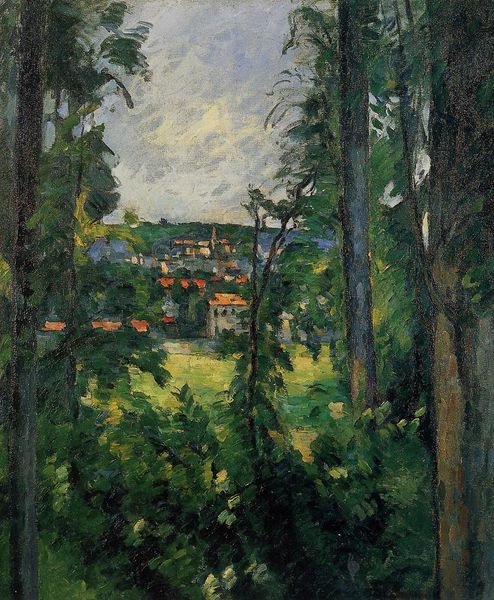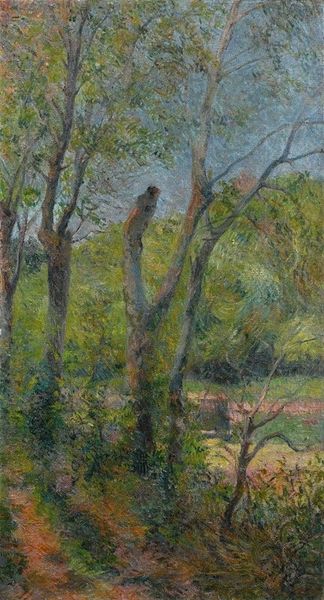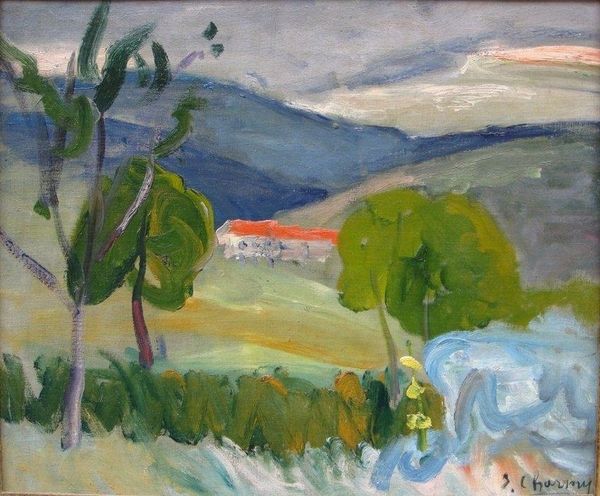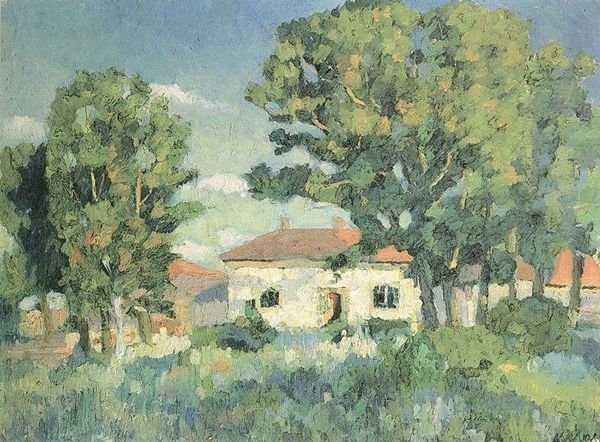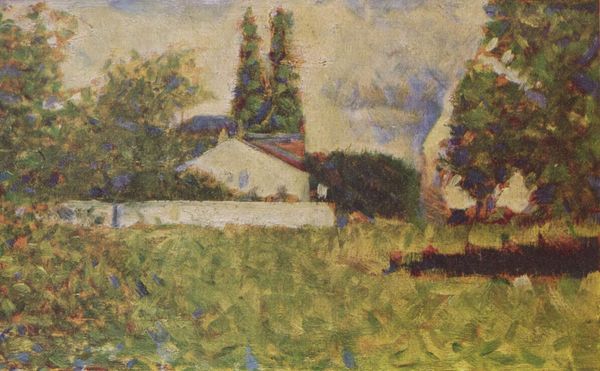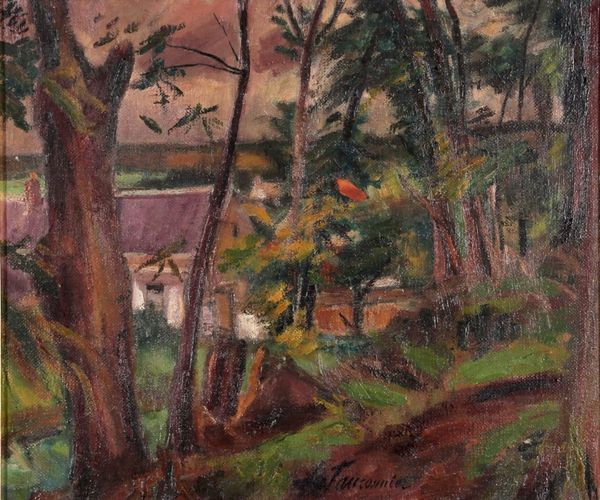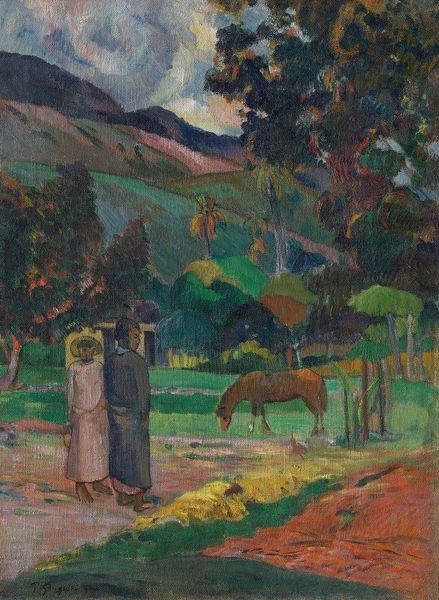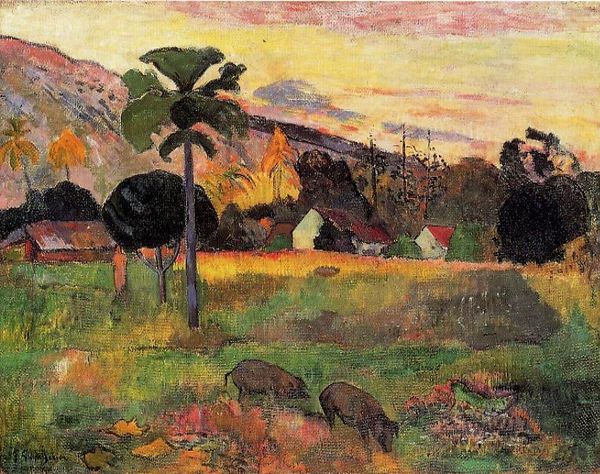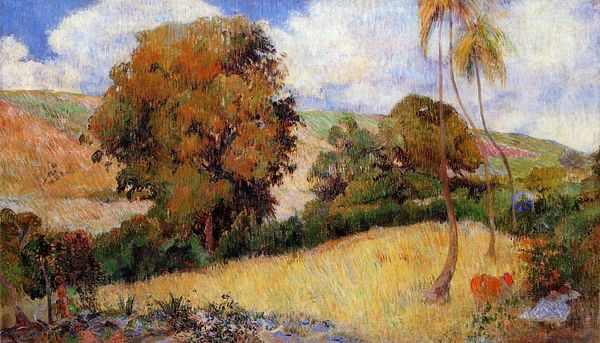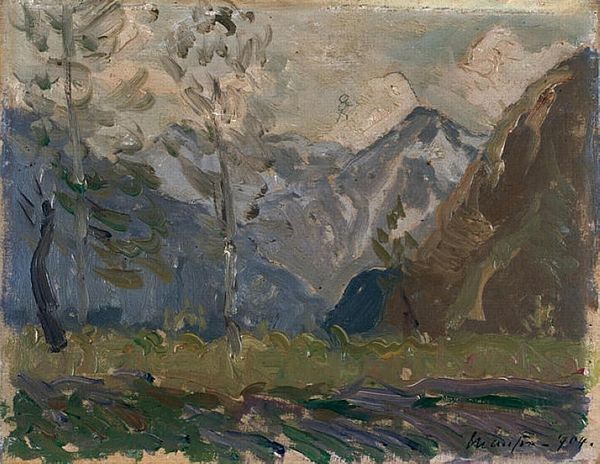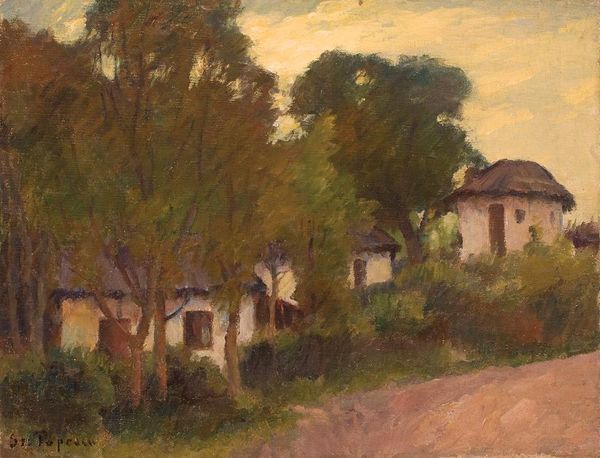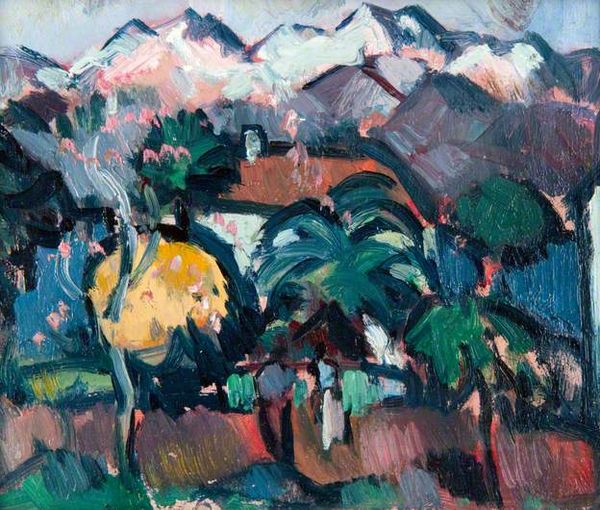
Copyright: Public Domain: Artvee
Paul Gauguin made 'Landscape with a Horse' using oil paint on canvas, a quintessentially modern medium, yet he aimed to represent a scene of the pre-modern, seemingly untouched world. Gauguin applied the paint in loose strokes that break down the conventional representation of the landscape. The material handling here is significant, as the visible brushwork emphasizes the artist's presence and labor in creating the scene. The thick application of paint and the rough texture give the work an almost sculptural quality, pushing against the traditional illusionism of painting. The painting is imbued with cultural significance due to Gauguin's decision to depict a Tahitian landscape, reflecting his search for a simpler way of life away from industrialized society. This connects to broader issues of colonialism, labor, and consumption, as Gauguin's escape was made possible by his class and privilege. By focusing on the materiality and context of Gauguin's process, we can better understand the complex meanings embedded within this landscape, challenging the traditional boundaries between fine art and the social world.
Comments
No comments
Be the first to comment and join the conversation on the ultimate creative platform.

